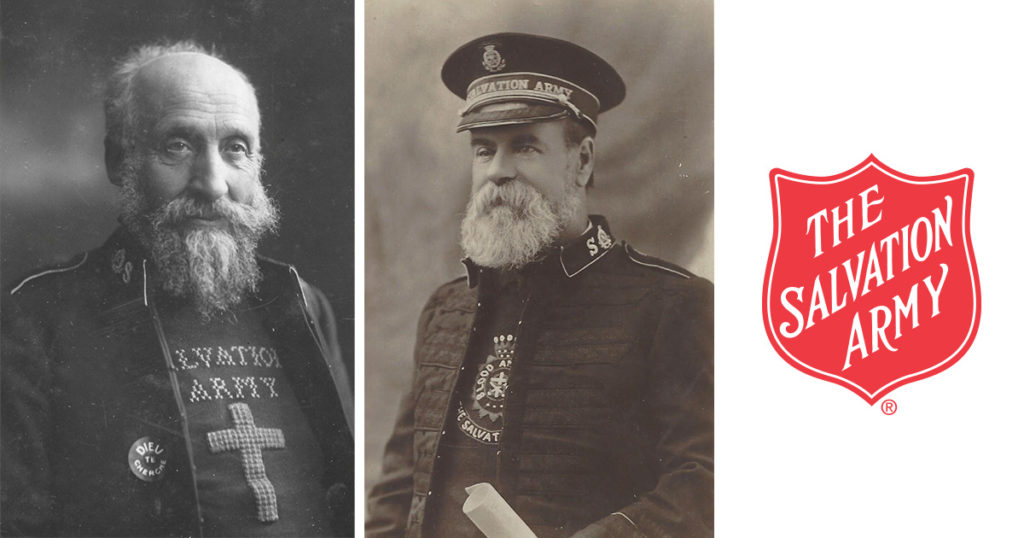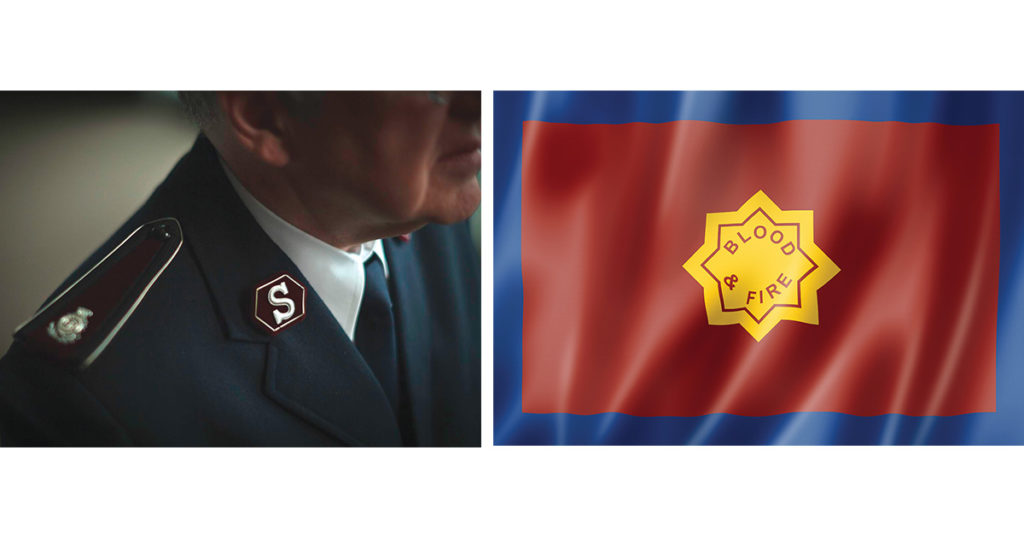What Do the Military Terms and Symbols Mean in The Salvation Army?
"We pray to be known as an Army faithfully fighting for God!"
From the beginning there has been an unconventional military tone to The Salvation Army’s approach to ministry. Our founders, William and Catherine Booth, believed in taking the gospel of Jesus Christ directly to the people. This meant they had to abandon a traditional approach to pulpit ministry and go to the streets to preach to the poor, homeless and hungry people they found. Many followers quickly joined their fight for the souls of lost men and women. Two specific followers dramatically influenced the structure the organization later adopted: George Scott Railton and Elijah Cadman.
The Salvation Army had a few names before arriving at our current moniker. When founded in 1865, the first title was a geographical identifier, “The East London Revival Society.” As the operation expanded it was simply called “The Christian Mission.” Our name wasn’t formally changed to “The Salvation Army” until 1878 when upon reading a printers’ proof of the organization’s annual report William Booth noted the statement “The Christian Mission is a volunteer army.” The idea of being a “volunteer” in God’s army rather than a “regular” who was devoted and trained for full-time service did not sit well so he promptly crossed out “volunteer” and penned in “Salvation.”
George Scott Railton, a rising leader with a zealous nature, may have been behind this statement, as he loved fighting slogans and increasingly used them to describe the Mission’s work. He was known to describe the opening of a new preaching station as “a new battery of artillery opening fire” and even wrote several hymns with battle themes.
The change to the annual report became the basis for the official foundation deed in 1880 of an organization with our current name, The Salvation Army. From there, the military structure really took hold, especially when Elijah Cadman was sent to open a preaching station in Yorkshire. He was a small man who could not read or write, but he was fierce, and the Lord used him in mighty ways. He gathered 3,000 new followers, calling them the Hallelujah Army, and referred to himself as Captain Cadman and William Booth as the General.
Converts now became soldiers, and all affiliated were known as “Salvationists.” More terminology was born, with groups of soldiers called “corps” who were stationed at buildings called citadels, temples, outposts or battle stations. New symbols were created: a crest with meaning imbued in each part and a flag with a simple border of blue to represent the purity and holiness of God, a red field for the blood of Jesus Christ and a star in the center for the fire of the Holy Spirit. The words “Blood & Fire” were emblazoned on this star to clearly delineate the primary weapons of our kind of warfare. Followers began to develop and wear uniforms both to identify themselves and for practicality, such as bonnets and hats for protection when items were thrown at them in ridicule.
On May 9, 1912, General William Booth gave his final, most distinguished address to a packed crowd of 7,000 Salvationists at the Royal Albert Hall in London. Booth’s final words sum up the heart of The Salvation Army’s mission and vision and his own 60-year ministry.
“While women weep, as they do now, I’ll fight; while children go hungry, as they do now, I’ll fight; while men go to prison, in and out, in and out, as they do now, I’ll fight; while there is a poor lost girl upon the streets, while there remains one dark soul without the light of God, I’ll fight, I’ll fight to the very end!”

Is The Salvation Army still fighting?
Today, more than 150 years since our beginning and with a worldwide presence, The Salvation Army continues to fight the good fight against sin, our spiritual foe, and all that afflicts humanity like poverty, hunger, substance abuse, domestic violence, human trafficking, loneliness, misery and hopelessness. We still maintain a military structure that has served us well in being mobilized for service wherever need arises. This includes standardized practices, such as a uniform that, when worn by Salvationists, opens doors of support and avenues of ministry in myriad places. Our uniform is an easily recognizable symbol of our soldiers’ and officers’ witness as Christians and commitment to live lives set aside for service, modeled by Christ’s sacrifice of His earthly life for our salvation.
The sun does not set on our active battle fields as The Salvation Army is actively engaged in over 134 countries. Our flag, crest and red shield are all used to identify us worldwide, conveying our name which encompasses the many aspects of our mission. We pray to be known as an Army faithfully fighting for God!







